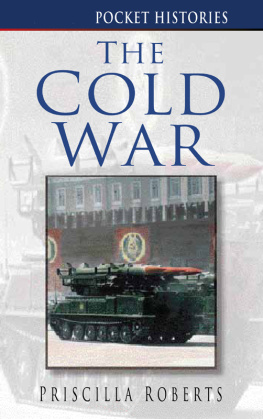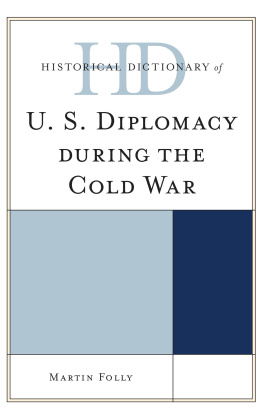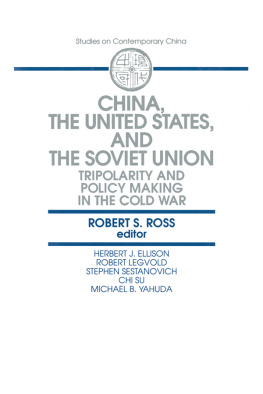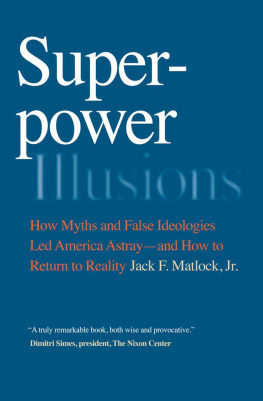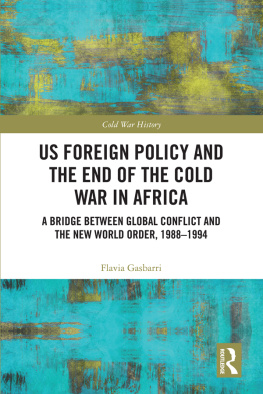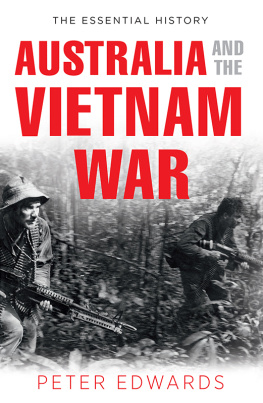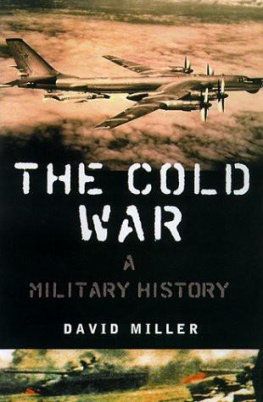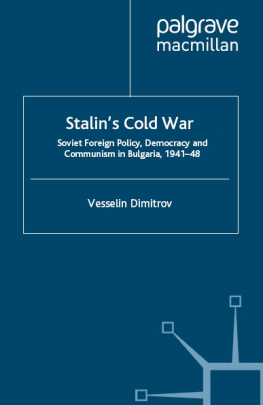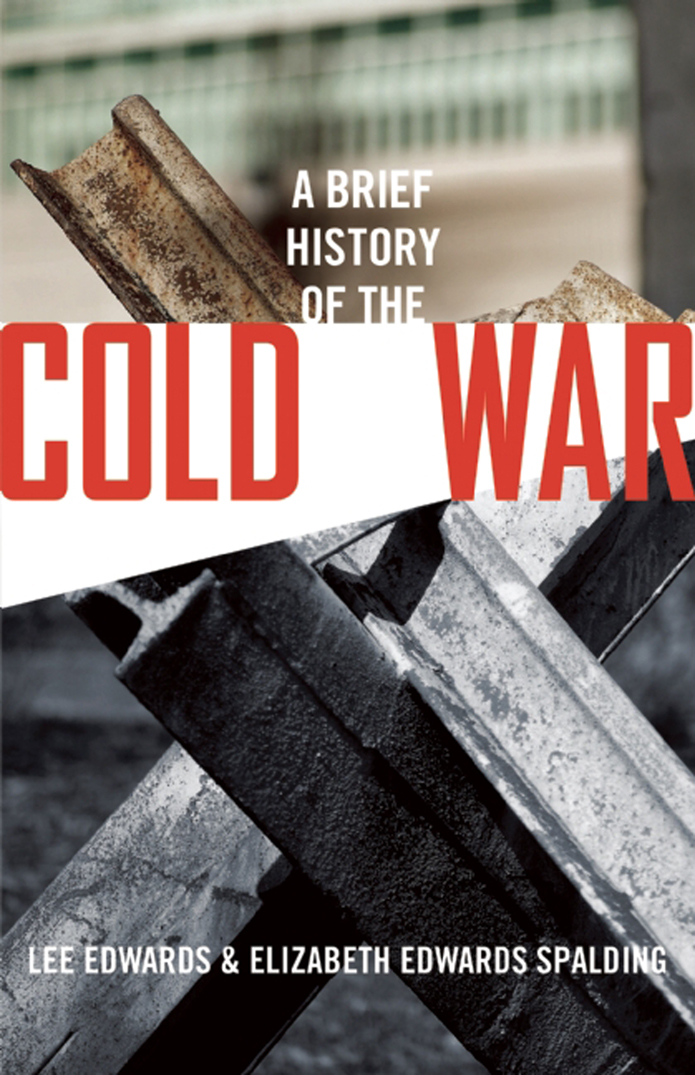

Copyright 2016 by Lee Edwards and Elizabeth Edwards Spalding
All rights reserved. No part of this publication may be reproduced or transmitted in any form or by any means electronic or mechanical, including photocopy, recording, or any information storage and retrieval system now known or to be invented, without permission in writing from the publisher, except by a reviewer who wishes to quote brief passages in connection with a review written for inclusion in a magazine, newspaper, website, or broadcast.
An earlier edition of this book was published by The Heritage Foundation in 2014 as part of their First Principles Series,
Regnery History is a trademark of Salem Communications Holding Corporation; Regnery is a registered trademark of Salem Communications Holding Corporation
Cataloging-in-Publication data on file with the Library of Congress
ISBN 978-1-62157-541-2
Published in the United States by
Regnery History
An imprint of Regnery Publishing
A Division of Salem Media Group
300 New Jersey Ave NW
Washington, DC 20001
www.RegneryHistory.com
Manufactured in the United States of America
10 9 8 7 6 5 4 3 2 1
Books are available in quantity for promotional or premium use. For information on discounts and terms, please visit our website: www.Regnery.com.
Distributed to the trade by
Perseus Distribution
250 West 57th Street
New York, NY 10107
For Anne and Matthew, our better halves
Table of Contents
Guide
CONTENTS
W e wrote this book because we were not satisfied with the texts we have used in our world history, international relations, and U.S. foreign policy courses. We felt there was a place in the literature for a brief and balanced history of the Cold War. We believe we have succeeded in writing such a book with A Brief History of the Cold War, and we invite your comments.
We thank The Heritage Foundation for publishing an early monograph edition of our history. We wish to acknowledge in particular the contribution of Dr. David Azerrad, director of the B. Kenneth Simon Center for Principles and Politics at Heritage, whose skillful editing made this a far better history. We also thank Heritage for its research assistance in the person of the following interns: Josiah Lippencott, Isabel Nelson, and Cooper Nye.
At Regnery History, our editor Tom Spence constantly provided wise suggestions while his colleague Maria Ruhl kept us on schedule. Rarely have we worked with a more professional team.
As always, we count our blessings, especially our spouses, Anne Edwards and Matthew Spalding, without whose love and support we would be lost.
T he Cold War was the most protracted and unconventional conflict of the twentieth century. World War I and World War II were great sweeping wars that shaped our history and our world, but they did not match the length or the complexity of the ideological and strategic struggle that occupied superpowers and lesser powers on every continent for more than four decades.
The Cold War was waged on many frontsfrom the United States to the Soviet Union, from Europe to Asia, from Africa to Latin Americaand by many different kinds of governments: liberal democracies, totalitarian regimes, and everything in between. There were grand strategy and petty politics, shrewd diplomacy and brutal coups. There were elements of economics, religion, and culture. There were shooting wars in Korea and Vietnam, and there were purges, deportations, gulags, and forced famines that killed millions of men, women, and children.
At stake in the Cold War was whether the postwar world would be dominated by the forces of totalitarianism led by the Soviet Union or inspired by the principles of political and economic freedom embodied in the United States. If the expansionist ambitions of the Soviet Union had not been contained, much of Western Europe as well as Eastern Europe might have become communist or at least friendly to communism, isolating the United States strategically and economically for years and perhaps decades to come. Considering that China too was under communist rule, the United States would then have faced powerful, unfriendly regimes to the east and to the west.
When the Second World War ended, the American people sought a return to normalcy, to a concentration on domestic not foreign affairs. Most hoped and expected they could turn over most of the responsibility for international affairs to Americas wartime alliesGreat Britain and Soviet Russiaand to the United Nations.
But six debilitating years of war had reduced Britain to a shadow of itself, and a militant Soviet Union, led by Joseph Stalin, was determined to proceed with its grand design of socializing the world. As for the UN, it was a new and untested organization. Quite suddenly, there was no one to protect America and its global interests but America itself.
For the next four decades and under nine administrations, Democratic as well as Republican, the United States pursued first a policy of containing the Soviet Union and communism, then a policy of dtente and accommodation, and finally a policy of undermining and bringing down what President Ronald Reagan called an evil empire.
Todays world would be a far different place if the United States had not waged and wonat the cost of tens of thousands of lives and many billions of dollarsthe Cold War. That conflict established America as the leader of the free world and a global superpower, thereby shaping U.S. diplomacy, military strategy, economic policy, and domestic politics from President Harry Truman to the present.
A merica and Russia, wrote Alexis de Tocqueville, seem called by some secret design of Providence each to hold in its hands the destinies of half the world. One regime is based on the principles of liberty, equality, the consent of the governed, and the rule of law; the other is grounded in autocracy, tyranny, and servitude. To attain his goal, the American relies on personal interest and allows the force and the reason of individuals to act, without directing them. The Russian, in contrast, concentrates all the power of society in one man.
So it appeared to the great French political philosopher in the 1830s when he wrote Democracy in America, a work that a century and a half later seemed uncannily prescient as the United States and the Soviet Union waged a forty-five-year conflict over the destiny of the whole world.
The origins of the Cold War, which began in early 1945 with the Yalta summit and ended on Christmas Day 1991 with the dissolution of the Soviet Union, can be traced to the Bolshevik Revolution of 1917, led by Vladimir Lenin, and the birth of the first communist state, the Union of Soviet Socialist Republics (USSR), which adhered to a revolutionary, expansionist ideology.
THE COMMUNIST IDEOLOGY
The theory of the Communists may be summed up in the single sentence: Abolition of private property.
EARLY EXPANSION
In early 1917, the Tsarist regime that had ruled Russia for more than five hundred years abruptly collapsed, an unexpected casualty of World War I. Led by Lenin, the Bolsheviks took advantage of a political vacuum and by the end of the year seized power. They initiated a campaign of terror that silenced any opposition but controlled only central Russia. The borderlands, inhabited by other nationalities and religions, proclaimed their independence. The Bolshevik response, Pipes writes, was to conquer by force of arms the lands and peoples that constituted four-fifths of Russias population. Thus was born the Union of Soviet Socialist Republics that would eventually comprise fifteen countries: Byelorussia, Ukraine, and Moldavia in Eastern Europe; Georgia, Armenia, and Azerbaijan in the Caucasus; Uzbekistan, Turkmenistan, Kazakhstan, Kirghizstan, and Tajikistan in Central Asia; the Baltic states of Estonia, Latvia, and Lithuania; and Russia itself.


